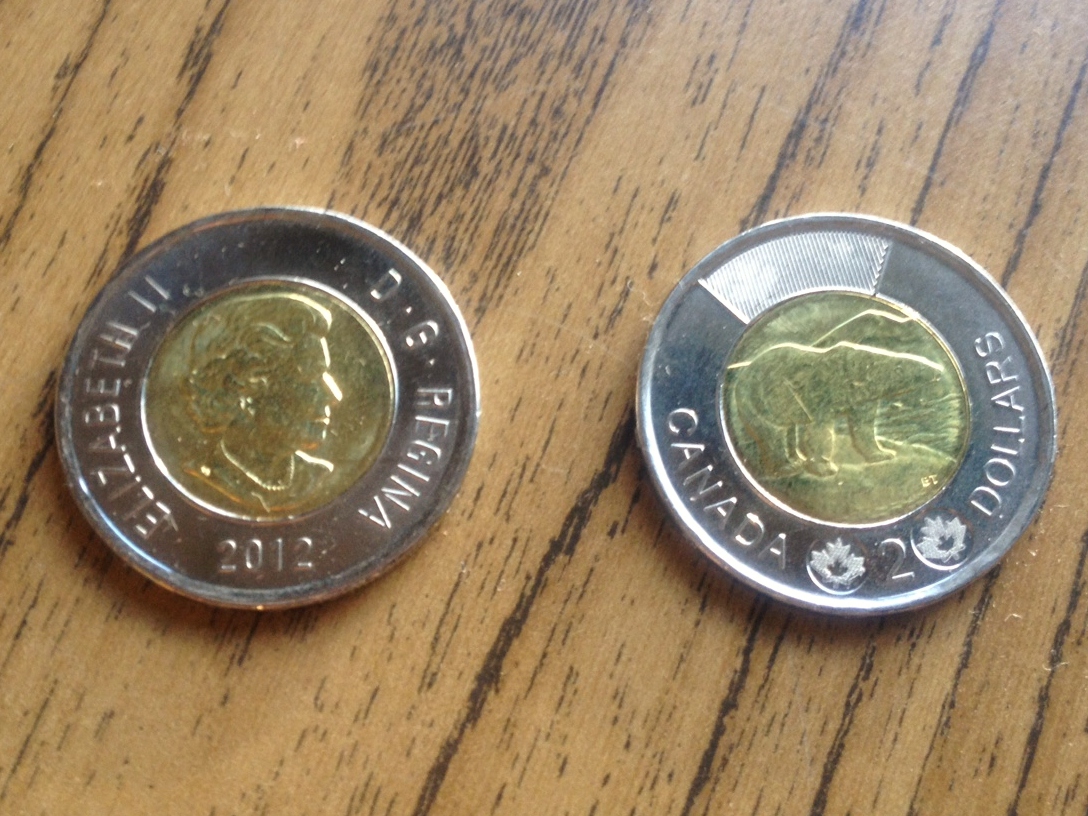DCHP-2
toonie twonie, twoonie, tooney DCHP-2 (July 2016)
n. — amelioration
the nickname for the Canadian two-dollar coin (see Image 1).
Type: 1. Origin — The two-dollar coin was introduced by the Royal Canadian Mint on 19 February 1996 to replace the two-dollar bill (see deuce). The front of the coin always depicts Queen Elizabeth II, while the reverse side usually features a polar bear (see the first 1996 quotation), except for a few special commemorative editions (see Royal Canadian Mint reference). The locking mechanism for the bi-metallic coin is a Canadian invention (see the 2002 quotation).
Shortly after the coin was introduced, it was nicknamed, with toonie and twoonie or twonie competing in 1996/97. The first form was elegant for its analogy with loonie, which had already become established as the nickname for the one-dollar coin (introduced in 1987), while the third form had its appeal for the inclusion of the spelling "two", with the middle form being a compromise that was very popular in the mid-1990s during the pre-release period (see the 1994 quotations). In the end, the analogy with loonie won and toonie is today the standard spelling.
The Gage-5 describes the term toonie as a blend of the words "two" and "-nie" on the analogy of loonie. Note that Gage-5, published in 1997, already codified today's preferred spelling.
See also Gage-5, s.v. "toonie", which is marked "Cdn", ITP Nelson, s.v. "toonie", which is marked "Informal" and described as "Canadian".- There were spelling variants galore for toonie in the 1990s (see above the horizontal line). As of 2000, the form stabilized, but even after that, the mostly oral term toonie is sometimes creatively spelled (see, e.g., the 2003 quotation).
References:
- Gage-5
- ITP Nelson
- Royal Canadian Mint "Balance and composition -- the 2-dollar coin" Accessed 20 Nov. 2012
Images:

Image 1: Front (left) and back (right) of a 2012 toonie. Photo: G. Lim